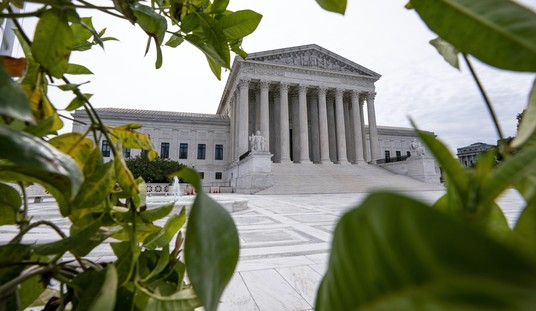(image credit: Thomas Campitelli, The Aasgaard Company 2013)
The idea that below-parallel squats are bad for the knees is complete nonsense that for some reason will not go away. This mythology is mindlessly repeated by orthopedic surgeons, physical therapists, registered nurses, personal trainers, dieticians, sportscasters, librarians, lunch-room monitors, and many other people in positions of authority with no actual knowledge of the topic and no basis in fact for their opinion.
I have been teaching the below-parallel squat for 37 years, and have taught hundreds of thousands of people — in my gym, through my books and videos, and in my seminars — to safely perform the most important exercise in the entire catalog of resistance training. Yet here in 2014, well into the 21st century, we still hear completely uninformed people — who have had ample opportunity to educate themselves yet have failed to do so — advise against performing squats under the assumption that they look scary or hard and are therefore “bad for the knees.”
Here are four reasons why this is not true, and why you should immediately start squatting correctly if you entertain the notion that you’d like to be stronger.
1. The “deep” (hips below the level of the knees) squat is an anatomically normal position for the human body.
It is used as a resting position for millions of people everywhere, and they squat into it and rise out of it every time. There is nothing harmful about either assuming a squatting position — whether sitting down in a chair or into an unsupported squat — or returning to a standing position afterward.
If you look at the knees and hips, you’ll notice that they seem suspiciously well-adapted to doing this very thing. Infants and children squat down below parallel all the time in the absence of pediatric medical intervention. These things should indicate to the thinking person that there is nothing inherently harmful in assuming this anatomically normal position. The fact that you haven’t been squatting is no reason to seek justification for not having done so.
The world powerlifting record for the squat is over 1,000 pounds. My friend Ellen Stein has squatted 400 at the age of 60 at a bodyweight of 132 pounds. Everybody seems to be okay.
Yes, friends, we’ve been squatting since we’ve had knees and hips, and the development of the toilet just reduced the range of motion a little. The comparatively recent innovation of gradually loading this natural movement with a barbell doesn’t mean that it will hurt you, if you do it correctly.
You don’t get to do the squat incorrectly and then tell everybody that squatting hurt your knees.
Disclaimer: This discussion refers specifically to the strength training version of the movement, the one designed to make you progressively stronger by lifting progressively heavier weights. If you are doing hundreds of reps of unweighted squats, your knees and everything else are going to be unavoidably and exquisitely sore.
(image credit: Thomas Campitelli, The Aasgaard Company 2013)
2. The correct squat is a hips-dependent movement, not a knees movement.
The knees obviously have to bend if you squat down, but they are not loaded the same way the hips are. The hips absorb and redirect the majority of the stress if you do the movement correctly by pushing the hips back. The hip muscles consist of all of the glute muscles, all the internal hip muscles, the hamstrings, and the groin muscles (the adductors). This large muscle mass adapts to squatting just like all muscles adapt to exercise — they get stronger. The correctly performed squat shoves the knees out to the side and the hips back, placing most of the load on the hips and completely protecting the knees from whatever it is that everybody is afraid of.
This position also places the back at a more horizontal angle than is typically recognized as correct by most personal trainers. The squat is thus a back exercise. The hip-bone’s connected to the back-bone, and if the hips are going to do the work, they have to be in a position that also loads the back. The squat is supposed to stress the back. It’s a back exercise. The back muscles get strong along with everything else as the weight goes up. If you don’t exercise the back muscles, they can’t get strong. Strong back muscles keep you from hurting your back, and the squat is a basic back exercise.
3. The full squat is not only safe for the knees, it is the best exercise for knee health you can do.
Squats are regarded as the basic lower-body exercise by strength athletes because nothing else compares to its ability to strengthen the structure of the knee — the muscles, tendons, bones, and ligaments that form the knee anatomy.
The muscles on the front of the thigh are the quadriceps. They attach below the knee to the “tibial tuberosity” — the bump at the top of the shin bone — just below the kneecap. When they pull this bone forward, the knee extends and the force at the tendon attachment is directed forward relative to the joint. In contrast, the hamstrings pull backwards on either side of the knee at their attachments, which balances the forward force from the quads. This happens in a correct squat when the hips move back and the torso leans forward. The balance of forces is optimum at a position just below parallel, and protects the joint so well that a correct squat can be safely performed even without an ACL. (I don’t have one.)
(image credit: Thomas Campitelli, The Aasgaard Company 2013)
4. Partial squats are performed with a more vertical back angle that does not permit the hamstrings to tighten and protect the knees.
Partial squats usually leave the hamstrings out of the exercise, because they are usually thought of as an exercise for the “quads.” This is muscle-group thinking instead of movement-pattern thinking. The beauty of the squat is that it works so much more than just one muscle group.
Since a partial squat doesn’t require you to move the load very far or to use the hard part of the exercise’s range of motion, it allows the use of much heavier weights. Kids playing around in the gym will always squat this way, and it doesn’t help that most of the personal trainers in the gym think partial squats are not only okay, but correct.
Unfortunately, high school football players under the guidance of coaches motivated by the lust for a defensive line that “squats” 500 pounds are often subjected to more spinal loading than their young backs are prepared for. As a general rule, if the bar is so heavy that you cannot squat below parallel with it and stand back up, it’s too heavy to have on your back.
The below-parallel squat is unparalleled for the development of strength, balance, bone density, and health. It works all the muscles in the body at the same time, while allowing increasingly heavier loads to do the magic of progressive adaptation. If you are afraid of squats, you need to rethink the situation.












Join the conversation as a VIP Member